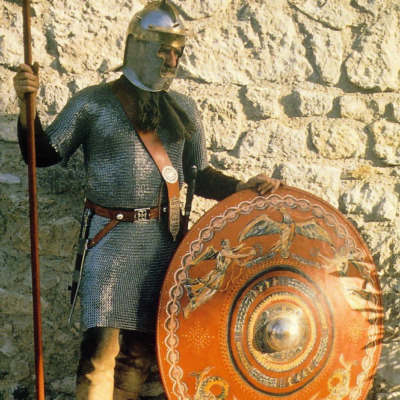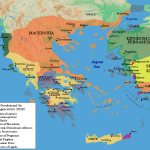Chapters
In the history of the Roman army, the phalanx was nothing new. This system was adopted by the Etruscans in the early period of Rome’s existence. During the second war with the Samnites, the greatest disadvantages of this formation were revealed, namely the lack of manoeuvrability. The Romans decided to move away from the phalanx after the infamous battle in the Caudine Forks, in favour of a manipulative order.
Alexander the Great’s influence on the emperor
If we were to indicate the greatest authority of Caracalla, it would certainly be Alexander the Great. The emperor was so fascinated by the figure of the Macedonian king that he wanted to connect Rome with Parthia by marrying the daughter of Artaban IV, but he was refused, which resulted in new wars. So it was only a matter of time before the crazy emperor created his own phalanx.
Cassius Dio says that in 217, Caracalla, preparing for the war, formed a phalanx consisting of about 16,000 people from Macedonia and armed in the ancient way (pikes and linen armour). Herodian confirms Dion’s account and adds that a similar unit of Spartan phalanxes was formed.
Real image of the imperial phalangaria
The tombstones of the Spartan phalangites have survived to this day, such as the one above belonging to Aurelius Alexianus. The soldier depicted is armed with: lorica segmentata, a mid-length sword commonly used in the 3rd century CE, an oval shield that will begin to replace the cylindrical scutum, the traditional Spartan, pilos and club – a symbol of Heracles or fustis – in the 3rd century CE.
Alexianus’ armament is therefore typical of a legionary of the first half of the 3rd century, and there is no indication that the legions or auxiliary troops changed their tactics.
Therefore, one can guess that Caracalla, going to war with the Parthians, wanted to match Alexander, who conquered the east thanks to the phalanx.
The “Macedonians” of the emperor were most likely praetorians and II Parthica legionnaires from Macedonia and Thrace. Numbers close to 15/16 thousand soldiers would be true. Reference to pikes may refer to spears or pila, and cloth cuirass to thoracomachus or subarmilis, quilted caftans worn under armour. Alexander Severus, who was at war with the Parthians in 231-233, also had his own phalanx, but this too was not armed in the ancient Macedonian manner:
Finally, he provided himself with soldiers armed with silver shields and with golden, and also a phalanx of thirty thousand men, whom he ordered to be called phalangarii, and with these he won many victories in Persia. This phalanx, as a matter of fact, was formed from six legions, and was armed like the other troops, but after the Persian wars received higher pay.
– Historia Augusta, Alexander Severus
Most likely, the II Parthica legion was the only composed of the phalanx, since it was the only legion that made up the entire field army. The Historia Augusta and the image of Alexianus on the tombstone prove that the phalanx was just an honorary title given to a unit fighting in the East, imitating the deeds of Alexander the Great.









